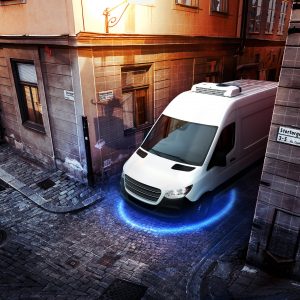Half of trucks could become electric, report says
Roughly half of all U.S. and Canadian Class 8 tractors engaged in regional-haul applications could switch to battery-electric technology today with minimal or no impact on operations, productivity, or efficiency, according to a new report.

Run on Less Electric evaluated the performance of various light, medium and heavy-duty electric trucks in real-world operations around the country to gain insights into how well the trucks performed compared to conventional diesel-powered units.
The North American Council for Freight Efficiency’s (NACFE) new report, “Electric Trucks Have Arrived: The Case for Heavy Duty Regional Haul Tractors,” is based on findings from NACFE’s “Run on Less Fuel’’ electric vehicle evaluation trials completed last year.
Run on Less Electric evaluated the performance of various light, medium and heavy-duty electric trucks in real-world operations around the country to gain insights into how well the trucks performed compared to conventional diesel-powered units.
Based on that study, NACFE considers short and medium regional heavy-duty tractors electrifiable today, said Mike Roeth, executive director of NACFE, during an online press briefing May 5. These trucks have a range of about 200 miles and improving total cost of ownership when monetizing all benefits, despite about 3,000 to 4,000 pounds of freight capacity penalty compared to diesels.
Regional haul tractors perform in various duty cycles, including out-and-back, hub-and-spoke and diminishing return.
Enjoying our insights?
Subscribe to our newsletter to keep up with the latest industry trends and developments.
Stay Informed
NACFE considers short and medium regional heavy-duty tractors electrifiable today, said Mike Roeth, executive director of NACFE
Battery-electric tractor models currently available could meet the needs of about 50% of this market segment, or an estimated 468,782 power units.
“Regional haul is really interesting when it comes to electric trucks,” Roeth said. “In 2019, NACFE concluded that the regional-haul operational model is really good for trucking. That’s because the trucks return to base every night — which is what drivers want. So, we’re seeing a lot of technology converge around regional haul today to make freight more predictable. And we’re seeing a lot of dedicated, regional-haul businesses grow rapidly with well-known national carriers like J.B. Hunt, Schneider and others moving into this market segment.”
Because many regional-haul tractors return to base daily, fleets can have more confidence about making investments in charging infrastructure, he said. Just as important, these trucks often have at least 10 hours of overnight dwell time for charging.
“Many people mistakenly assume Class 8 heavy-duty tractors are used in mostly long-haul disparate routes,” Roeth said. “But, in fact, only 40% are used in long-haul, and 30% are vocational trucks and regional haul tractors respectively. These regional-haul tractors are good candidates for electrification due to their shorter daily distances and return to base operation.”
Regional EV Operational Challenges and Considerations

NACFE found that operational changes, such as the choices of the truck for each daily route, en route opportunity charging, driver incentives and managed charging, are all examples of actions to improve the total cost of ownership of heavy-duty regional-haul electric trucks
NACFE found that operational changes, such as the choices of the truck for each daily route, en route opportunity charging, driver incentives and managed charging, are all examples of actions to improve the total cost of ownership of heavy-duty regional-haul electric trucks. As a result, many actions and technologies are emerging to improve the total cost opportunities of operating electric vehicles in this market segment, many having to do with increasing range. Roeth noted that batteries are expensive and heavy, so fleets can reduce the up-front cost by taking actions to extend the range. Others include lowering costs with tactics such as charging during off-peak hours.
“We also found a critical relationship between freight and weight that fleets considering electric, regional-haul trucks must consider,” Roeth added.
NACFE previously found that for every 10,000 pounds of payload added to a diesel truck, it loses 0.5 mpg.
“And one of the biggest insights for us in this study is that there is a similar weight trade-off for battery-electric trucks as well. That’s because each additional 10,000 pounds. in payload on those vehicles results in a corresponding loss of overall daily range.” However, Roeth noted that many shorter, 50-to-100-mile, regional haul routes typically carry heavier payloads than trucks working on 200- to 300-mile daily routes. “And these are issues that can be controlled by fleets to ensure maximum performance from the trucks.”
Roeth also called out the drivability (particularly in getting up to speed), quietness and other aspects that make electric trucks attractive to drivers. Drivers of all sizes of electric vehicles shared how much they like the driving experience compared to internal combustion engines. For regional-haul driving, much time is spent accelerating to highway speeds, and this specific aspect of day cab electric tractors definitely will help attract and retain drivers in this segment, he said.
“For me, this a lot like when automated transmissions came into trucking,” Roeth said. “The drivers liked them immediately, and they very quickly became the dominant transmission in the industry. I think we’re just at the beginning of this movement with electric trucks — and more, dramatic improvements are coming. In fact, I believe electric trucks are going to be the biggest positive attraction for drivers — more than anything else I’ve seen in my career.”





















